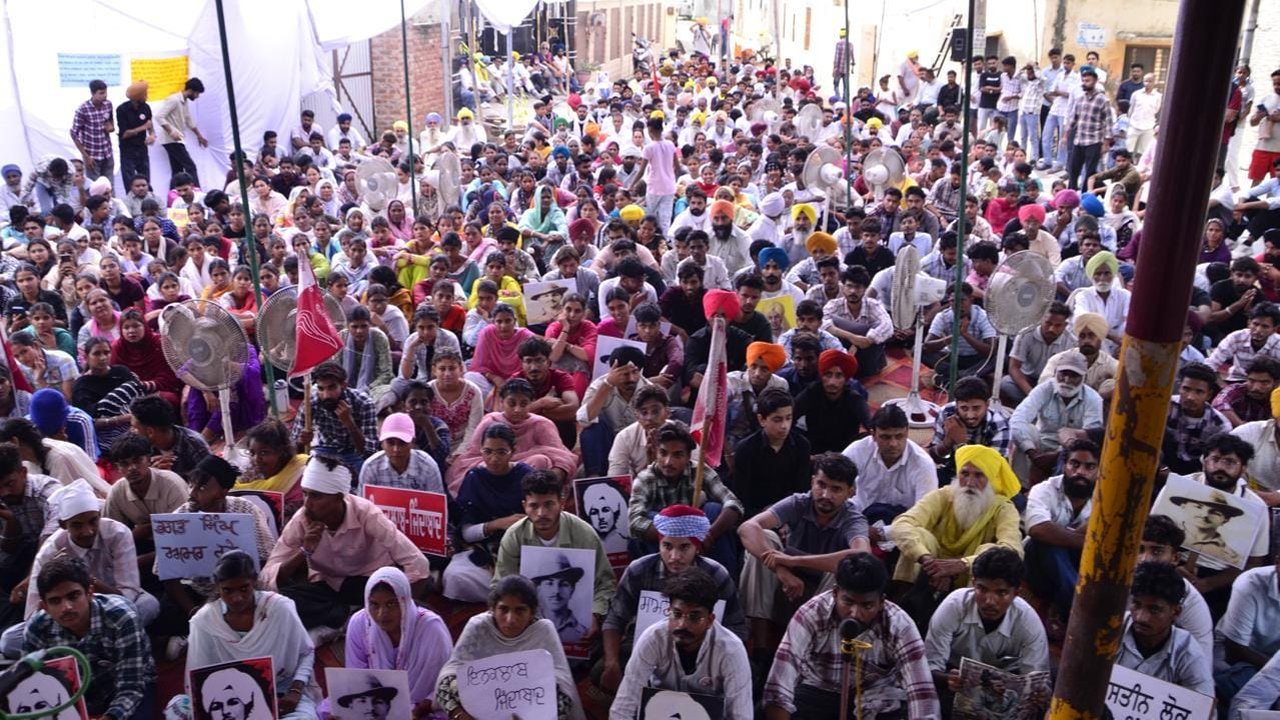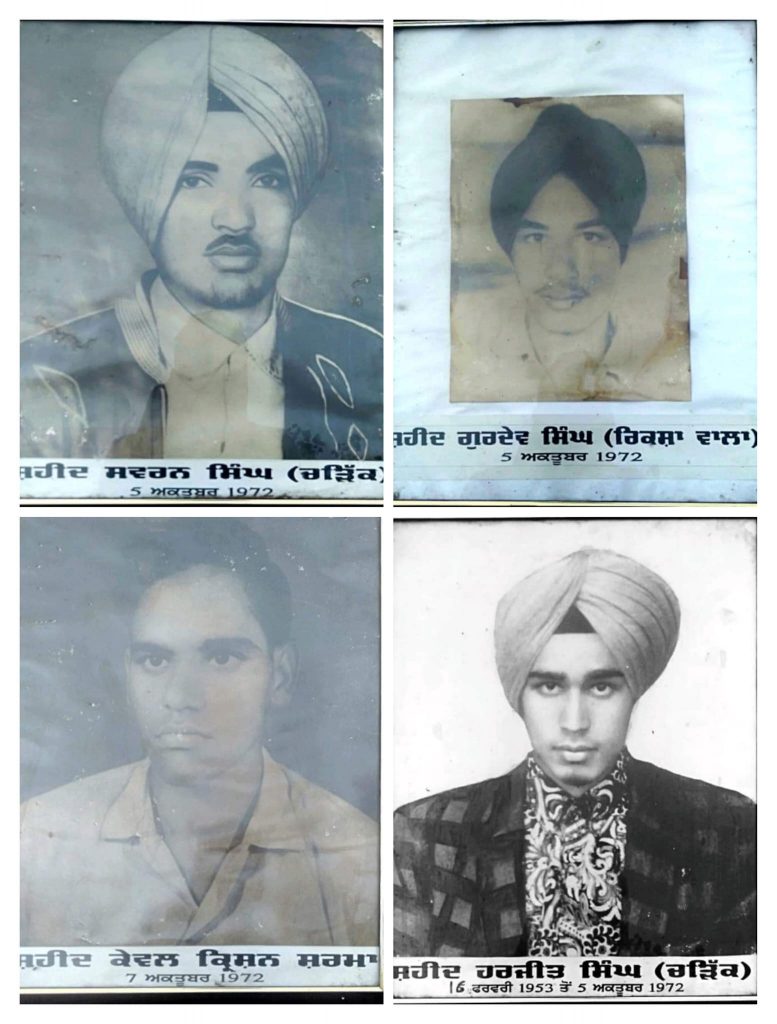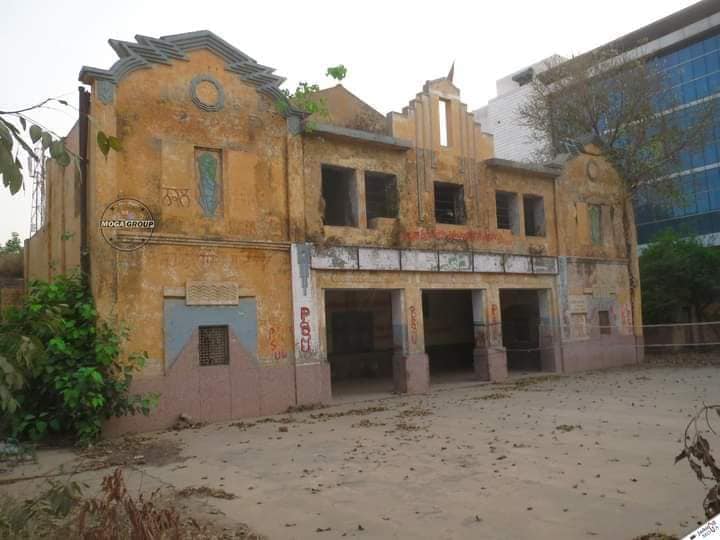The historic Moga Sangram Rally of 1974 exemplified the powerful revolutionary student and youth movement of the 1970’s professing secular and revolutionary goals, and was led by the Punjab Students Union (PSU) and the Naujawan Bharat Sabha. The 50th anniversary of the historic rally was commemorated in Punjab. A report Harsh Thakor.
On October 22, a state level seminar was held by Punjab Students Union (Shaeed Randhawa) in Sangrur, with activists assembling from all over the state, to commemorate the 50th anniversary of the historic Moga Sangram rally on October 26 1974.
The historic Moga Sangram rally of 1974 was held in the aftermath of the police firing on students protesting outside Regal Cinema Hall in Moga in 1972. The Moga agitation arose from a clash between college students and the management of the Regal Cinema hall in Moga. The students raised their voices against the black marketing of cinema tickets in the magistrate’s office. A protest march was organised on October 5, 1972, outside the cinema hall. After the management displayed complete apathy, the students were infuriated, and attempted to set the hall on fire. The police burst tear gas shells, but were unable to quell the students, and resorted to firing. The police opened fire, killing four people, including student leaders Swarn Singh and Harjeet Singh.
The police firing on protesting students ignited the students rage and the protests spread to colleges of Jagraon, Ludhiana, Jalandhar etc. On October 7, enraged students and people set the cinema hall on fire. The police again retaliated by firing, resulting in the killing of two more persons. This crystallized a massive uprising all over Punjab, and the state government ordered the closure of all colleges. In almost every city of Punjab, the student community took to the streets, burnt roadway buses and cinema houses defying the prohibitory orders.
The students had pent-up anger since the late 1960s’ police encounters of the Naxalites, and it found a vent in a fortnight long violent protest in September 1972. After 1972, the Punjab student movement’s next big moment was the massive Moga Sangram rally of 1974. This rally was the turning point or planted the seeds for the politics of revolutionary mass line to take shape. It was a befitting reply to the left adventurist line which propagated that armed struggle was the only feasible form of struggle, and illustrated the potential of the oppressed classes to wage democratic resistance. It exemplified the powerful revolutionary student and youth movement of the 1970’s professing secular and revolutionary goals, and was led by the Punjab Students Union (PSU) and the Naujawan Bharat Sabha. PSU professed the secular ideals of Shaheed Bhagat Singh and chartered a genuine democratic alternative to all oppressed classes, penetrating the rural areas to integrate with the peasant struggles and confronting religious fundamentalism at its hardest point.
During this period the Jayparakash Narayan (JP) movement was soaring at a height. Jayaprakash Narayan had inducted student leaders into his movement but in Punjab the PSU staunchly opposed the JP movement, characterising it as being in tune with ruling class politics and devoid of class content. The JP movement made the people and parties divert from genuine class and ideological inclination or polarisation. It channelised the anti-government sentiment of the masses for the selfish benefit of a faction of the ruling classes, through meaningless slogans. Both the warring factions of the ruling class parties in Punjab, the Congress and parties like Akali Dal – were also trying their level best to derail the erupting people’s movement and bring the people into their fold. A large section of the working class was unorganized and the organized section had been devoid of class consciousness under the influence of the revisionist-reformist leadership. The vast peasant masses were unorganized and generally subjugated to the influence of the feudal and rich peasants.
Only the student and the youth movement were swayed by leadership of revolutionary politics and were alive and vibrant. The student movement in particular had a strong public appeal due to its militant tradition and its voices resonated loudly. PSU raised the slogan of ‘dona ton mukti’ (liberation from both Congress/Akali and JP) and called for ‘sampuran inquilab (complete revolution).” It was also the first time that student activists had persuaded labour leaders to take over the mantle of leadership. The labour leaders expressed gratitude for the encouragement and support received from the revolutionary movements of the students and youth. It gave a fresh momentum to the workers movement in Punjab.
Prithipal Singh Randhawa, who steered the Punjab Students Union (PSU) struggle, was murdered in Ludhiana on July 18, 1979. During this period, the Sikh extremist or Khalistani politics took centre stage in Punjab and did great damage to the revolutionary student movement. Several cadres of Punjab Students Union and Naujawan Bharat Sabha drifted into the Sikh fundamentalist camp. After decades, the student movement became significant again in 2019 when the students came out to oppose the Citizenship (Amendment) Act (CAA) and the National Register of Citizens (NRC). In 2020 and 2021, they joined the fight against the three farm laws. In between, the PSU split thrice, to become PSU, PSU (Shaheed Randhawa), and PSU Lalkar. Much weaker compared with the 1970s, the student movement needs to find its meaning.
Today, the Punjab Students Union (Shaheed Randahawa) is trying to resurrect the past energy and reorganize the student movement. It is attempting to garner or knit the scattered forces into a solid core to steer youth towards imbibing the ideals of Shaheed Bhagat Singh. It has waged consistent struggles for SC and BC scholarships, scrapping of fee rises, proper library facilities, and reconstruction of a library in memory of Shaheed Bhagat Singh in Moga and lifting of ‘black’ anti-people laws.
On September 28, a huge rally in Hussainwala was held by Punjab Students Union (Shaeed Randhawa) in memory of Saheed Bhagat Singh. The participants in the rally pledged to challenge the anti-people politics of the Aam Aadmi party as much as of the Akali Dal and Congress, and never to soft pedal with Sikh fundamentalist politics. The speakers at the rally pointed out how the youth in Punjab should follow the ideals of Bhagat Singh in everyday life to give the culture of imperialism and capitalism a jolt and integrate with the struggles of the peasantry and working class.
The main speaker at the seminar, former secretary of PSU (Shaheed Randhawa), Pavel Kussa, summarised the significance of the Moga Sangram rally in today’s context. He drew a similarity between the struggles against warring factions of ruling classes of that period with the opportunism of ruling class parties today. He pointed to the similarities of the populist slogans of the JP Movement with that of the Aam Aadmi party in Punjab today, lacking genuine class character. He explained how even today partial struggles for demands could be converted into political struggles, whether on price rise, fee hikes, scrapping of electricity bills, eradication of interest on farmers’ loans, remunerative crop prices, implementation of land ceiling act, stipulated minimum wage and work for agricultural labour etc. He narrated how such a resurrection of peoples’ movement could give a crippling blow to the backbone of the current neo-fascist saffron wave.
Today the Regal cinema hall in Moga is in tatters but the event from 1972-74 still flashes like an inextinguishable light.
Harsh Thakor is a freelance journalist.
Thanks for the information from Surkh Leeh, Pavel Kussa and Hoshiyar Salemgarh of PSU (Shaheed Randhawa).



